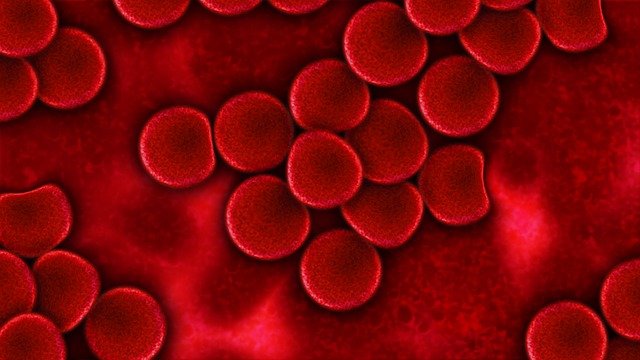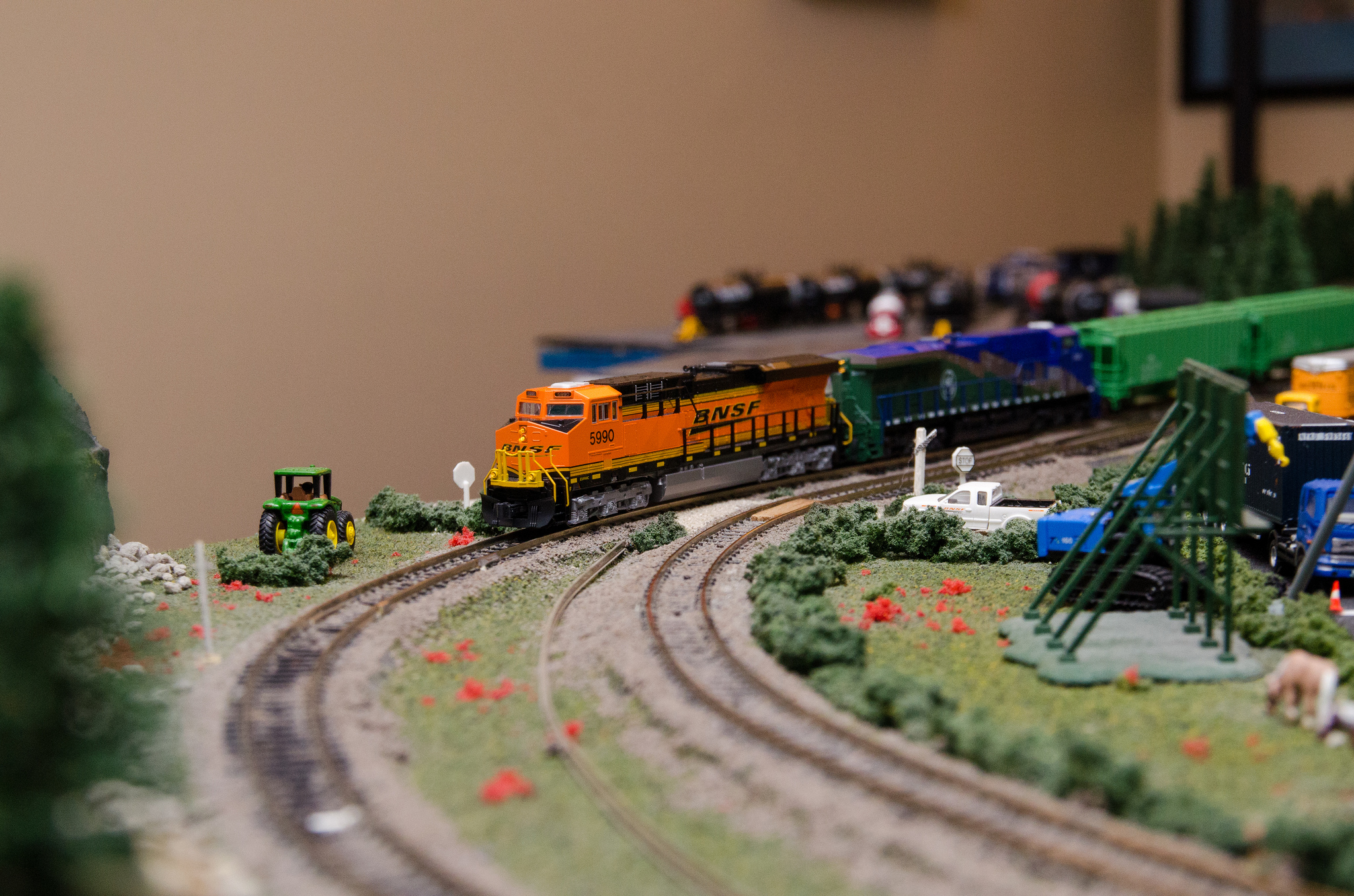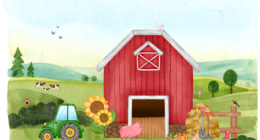The Columbus Zoo and Aquarium has announced that young female polar bears, Amelia Gray and Neva, departed from the Columbus Zoo Tuesday morning and arrived at The Maryland Zoo in Baltimore during the early evening hours.
Four members of the Zoo’s animal care team, along with one of the Zoo’s staff veterinarians, traveled with the bears and confirmed that they arrived safely. Two members of the animal care team will also stay for a few days to help facilitate Amelia Gray and Neva’s transition to their new home.
While the mother-reared bears will be missed by the Zoo’s animal care team and the Central Ohio community, the Association of Zoos and Aquariums’ (AZA) Species Survival Plan® (SSP) recommended the move for 23-month-old Amelia Gray, Neva, and Neva’s twin brother, Nuniq, who moved to the Henry Vilas Zoo in Madison, Wisconsin in September. All three bears are weaned, and the young bears are quickly growing to be the size of their mothers (with Nuniq already outweighing his mother, Aurora, at over 650 pounds). Moving the young bears to other AZA-accredited facilities also allows for the opportunity for the Columbus Zoo to welcome Lee, a male polar bear from Denver Zoo, who will arrive later this fall. Lee will subsequently be introduced to the young bears’ mothers, Anana (cub Amelia Gray) and Aurora (cubs Neva and Nuniq).[widgets_on_pages id=1]
“While these young polar bears will be greatly missed by the Zoo’s dedicated animal care team and the Central Ohio community, we realize the importance of our commitment to ensuring that this threatened species will be around for generations to come,” said Columbus Zoo and Aquarium President and CEO Tom Stalf. “We are proud of the success of the Columbus Zoo’s polar bear breeding program, and we look forward to continue contributing to the knowledge of this incredible species with our guests and within our zoological community so collectively we can make a positive difference for polar bears’ future.”
The dates when Nuniq, Neva, and Amelia Gray will make their first public appearance at their new homes have not yet been determined and will occur after the mandatory quarantine period has been completed.
“It’s always bittersweet for our team whenever we need to bid farewell to animals in our care as they reach new life phases. We’ve marveled at just how amazing Anana and Aurora have been as mothers, and we’ve been there every step of the way as Amelia Gray, Neva, and Nuniq have grown from tiny cubs to inquisitive, independent young bears. Though we will miss them very much, we are incredibly proud of the hope they represent for the future of their species,” said Carrie Pratt, curator of the Zoo’s North America region.
About the Columbus Zoo’s polar bears:
Four surviving polar bear cubs have been born at the Columbus Zoo since the Zoo’s Polar Frontier region opened in 2010. The breeding of Anana and Aurora with male, Nanuq, who died of age-related causes in 2017, was based on a recommendation from the Association of Zoos and Aquariums’ Species Survival Plan® for threatened and endangered species. Three polar bear cubs were born at the Columbus Zoo in 2016—the only polar bear cubs born at a North American zoological facility that year.
First-time mother, Anana, gave birth to her female cub, Amelia Gray, on November 8. Amelia was originally a twin, but unfortunately, her twin did not survive. The survival rate for a polar bear cub during the first few weeks of life is only about 50 percent. Amelia Gray received her name after a public naming opportunity, presented by Kroger. The name Amelia means “defender,” which represents that she is a conservation protector for her species, and Gray is a nod to one of the unique features she had when she was younger—a small gray patch of fur located along the left side of her neck.
Anana’s own twin, Aurora, welcomed her twin cubs on November 14—a male named Nuniq and a female named Neva. The twins were named through one of the many Columbus Zoo employee initiatives raising funds for conservation, resulting in several thousand dollars being raised to benefit wildlife around the world. Two employees from the Zoo’s North America team were awarded the opportunity to name the twins: Neva, which means “white snow” (and is also a river in Russia), and Nuniq, which is a derivative of Nanuq, the cubs’ late father. Nanuq was beloved among Zoo staff, who decided that selecting a derivative of Nanuq for the male cub would be a good way to continue honoring his legacy.
Amelia Gray was not raised together with Nuniq and Neva as female polar bears typically raise their young independently. However, they had daily opportunities to view one another, which will help in the introductions of Amelia Gray and Neva in Maryland.
Aurora is also the mother of Nora, who was born in 2015 and hand-reared by the Columbus Zoo’s animal care team after Aurora no longer was caring for her. Nora now lives at Utah’s Hogle Zoo in Salt Lake City.
Polar bears are native to the circumpolar north, including the United States (Alaska), Canada, Russia, Norway, and Denmark (Greenland). They are at the top of the Arctic food chain and primarily eat seals. Polar bear populations are declining due to the disappearance of sea ice, and experts estimate that only 20,000-25,000 polar bears are left in their native range. Some scientists believe if the warming trend continues, two-thirds of the polar bear population could disappear by the year 2050.
The Columbus Zoo and Aquarium is dedicated to conserving polar bear populations in their native range. Since 2008, the Zoo has contributed more than $250,000 to research benefiting polar bears in the Arctic. Polar Bears International (PBI) has also designated the Columbus Zoo and Aquarium as an Arctic Ambassador Center. At the Columbus Zoo, visitors are encouraged to do their part to save this amazing species by turning off lights when leaving a room, minimizing their use of heating and cooling units, planting trees, and other ways to reduce energy consumption.
For the latest news about the polar bears, follow the Columbus Zoo via social media on Facebook, Twitter and Instagram. For more information about the Columbus Zoo and Aquarium, please visit ColumbusZoo.org.










